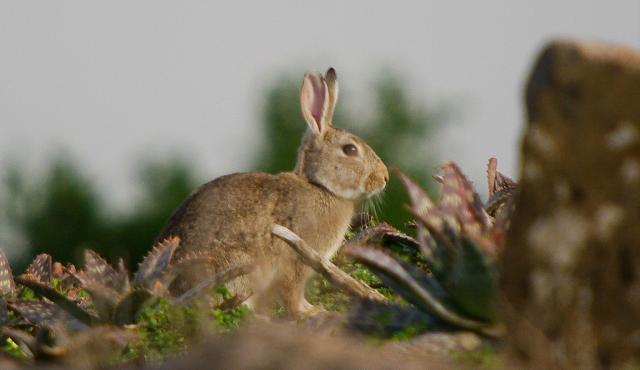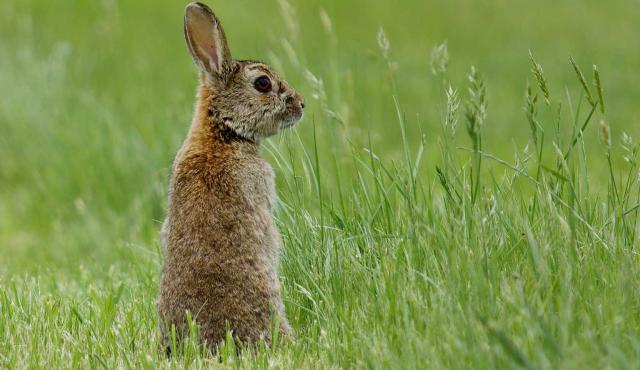A range of teacher professional learning programs will be developed to accompany the Biodiversity of the Western Volcanic Plains online outreach...



European Rabbit
Oryctolagus cuniculus
Mainly nocturnal. Shelters in burrows (warrens) during the day. Can breed from 4 months of age, at any time of the year. When conditions are good they can produce 5 or more litters a year, with 4 to 5 young in each litter. Their impact is greatest during drought and straight after a bushfire, when food is scarce and they eat whatever they can. They ringbark trees and shrubs, and prevent regeneration by eating seeds and seedlings.
| Details | Description |
| Type | Mammal |
| Group | Placental |
| Identifying Characteristics | |
| Distinctive Markings | Ears shorter than length of head and without a black tip, short white tail. |
| Diet | Herbivore. Eats green grass, herbs, fleshy plant roots and tubers. Digs below ground to reach roots of grasses and shrubs. Also eats bark and seeds. |
| Habitat | Habitats ranging from deserts to coastal plains, wherever there is suitable soft soil for digging their burrows (warrens). |
| Native Status | Introduced |
| Taxonomy | |
| Phylum | Chordata |
| Class | Mammalia |
| Order | Lagomorpha |
| Family | Leporidae |
| Genus | Oryctolagus |
| Species | cuniculus |

Distribution maps indicate current and historic locations where species have been sighted.
Source: Atlas of Living Australia
| Conservation Status | |
| DEPI Advisory List | Not listed |
| FFG Act | Not listed |
| EPBC Act | Not listed |
The conservation status of species is listed within Victoria and Australia.
The Department of Environment and Primary Industry (DEPI) Advisory List consists of non-statutory advisory lists of rare or threatened flora and fauna within Victoria.
The Flora and Fauna Guarantee Act 1988 (FFG Act) lists threatened species in Victoria. Under the Act, an Action Statement is produced for each listed species.
The Environment Protection and Biodiversity Conservation Act 1999 (EPBC Act) is the Australian Government’s key piece of environmental legislation, listing nationally threatened native species and ecological communities.



